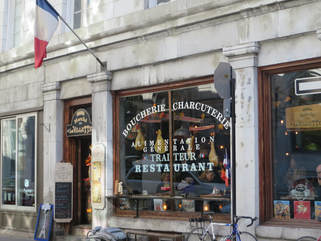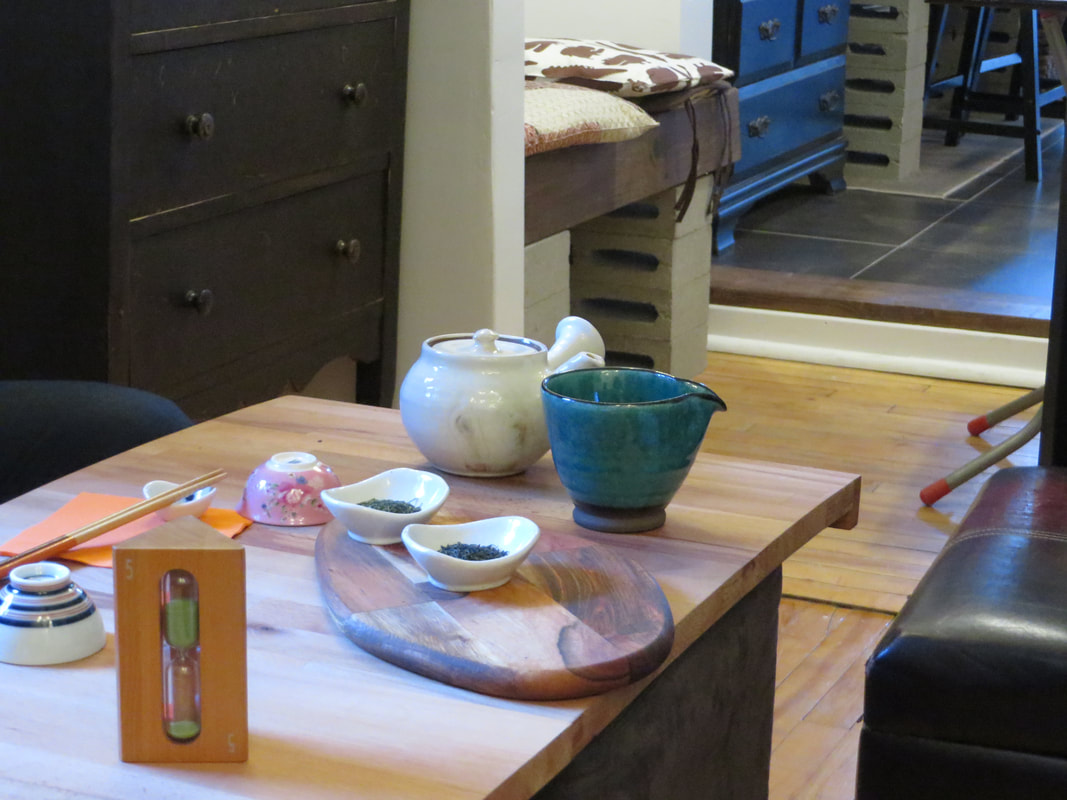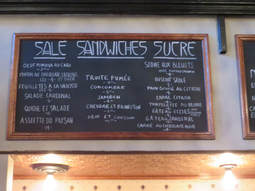Logically enough, we started in Montreal’s Chinatown, as the tea plant, Camellia Sinensis, originated in China. Our first stop was My Cup of Tea, where we tasted two traditional Chinese teas, Blooming Flower, a green tea with osmanthus flowers, and ginseng oolong. This charming little shop offers a wide selection of Chinese teas for purchase. (www.mcot.ca)
Next, we visited Camellia Sinensis Maison de Thé, one of the five top tea importers in North America. We removed our shoes as we entered this zen-style tea shop and school for tea sommeliers. Tea guru Kevin Gascoyne, co-author of the definitive Tea: History, Terroirs, Varieties, is one of the four owners this interesting place, which offers tea from China, Japan, India and other tea growing regions for sale. We were invited to sit and enjoy a tea tasting, starting with Silver Needle, a white tea from China. White tea is lightly oxidized for a fresh, clean tea flavor. We also appreciated a taste of Pu-Erh, from 2006, an aged black fermented tea named for the city in Yunan province where this tea originated. Tea was first consumed in China for its medicinal properties, and Pu-Erh is reputed to aid in digestion. Camellia Sinensis Maison de Thé has an extensive website (www.camelliasinensismaisondethe) where on-line shoppers can purchase a wide variety of elegant tea cups, teapots and other tea ware as well as an impressive selection of books and magazines on various aspects of tea in both English and French.
After a few pleasant sips of Dong Ding Mr. Chan oolong from Taiwan in the final moments of our respite at Camellia Sinensis, Mélissa, our intrepid tea mistress, hustled us off to Kusmi Tea (Maison de Thé since 1867.) This establishment, which started in St. Petersburg, now has 126 tea boutiques around the world. They specialize in perfumed, blended teas for unique aromas and flavors. From among Kusmi’s vast tea offerings from Sri Lanka, India, China and Japan, we were given several interesting tea blends to taste. Each blend has its own intriguing name, such as Anastasia, a very aromatic Earl Grey-style tea with orange and bergamot, Prince Vladimir, a spicy floral black tea flavored primarily with cloves and popular at Christmas time and St. Petersburg, a sweet, caramel flavored dessert tea. This large, airy shop, filled with big white tea canisters and imposing silver samovars, offers a tea blend for every imagination, including one called Be Cool, flavored with licorice, peppermint and verbena. The Kusmi boutique in Montreal is located at 3875 Saint Denis. The online boutique can be accessed at: kusmitea.com.

For the sweet portion of the tea ceremony, we were offered tiny cups of coconut cardamom cream with an intense matcha (powdered green tea leaves) syrup poured over it for a sort of “green tea affogato.” Our hostess told me that the coconut cream contained coconut milk, palm sugar and ground cardamom cooked together for about forty minutes and strained. She said that the matcha “syrup” contained no sugar. When I made the coconut cream later at home following these instructions, my version did not resemble the light, ethereal taste of the dessert we had a Cha Do Raku, although it did produce a very flavorful coconut syrup that was quite delicious poured over ice cream.
On the day of our visit, The Cardinal served only five food items, but each one was simple, basic and perfect, and presented on a lovely three-tiered server in the English tradition. The two sandwich selections were smoked trout with cream cheese and white cheddar with Branston Pickle Relish on firm white bread, both very good and served at room temperature as cheese should be. The blueberry scones arrived fresh from the oven with crispy tops and warm, soft centers, accompanied by clotted cream and jam. The sweets were both bars: very fresh lemon bars with crisp, buttery crusts and deep, dark and dense chocolate bars with no icing, intensely chocolate and not too sweet.
Finally, January is a perfect month for a tea party. After the busy holidays, it is comforting to share lovingly brewed hot tea and carefully prepared foods in a quiet cozy setting with a few favorite friends. The Winter Tea on our website is a good place to start. January 1, New Year’s Day, is also the day that the new year, in 2018, The Year of the Dog, is celebrated in Japan and among people of Japanese ancestry living throughout the world. We will be celebrating Japanese New Year at our home with the traditional foods, served with hot green tea, that are prepared only on this special day. I hope you will take a look at the Japanese New Year’s Tea in the January calendar section of myteaplanner.com. If you do not feel ready to make the entire menu, you might want to make just Ozoni, the simple, fresh and delicious Japanese New Year’s soup. As my co-author Kathleen points out in her January blog, winter is definitely the time for hot soup. Happy New Year to all of you.
























 RSS Feed
RSS Feed